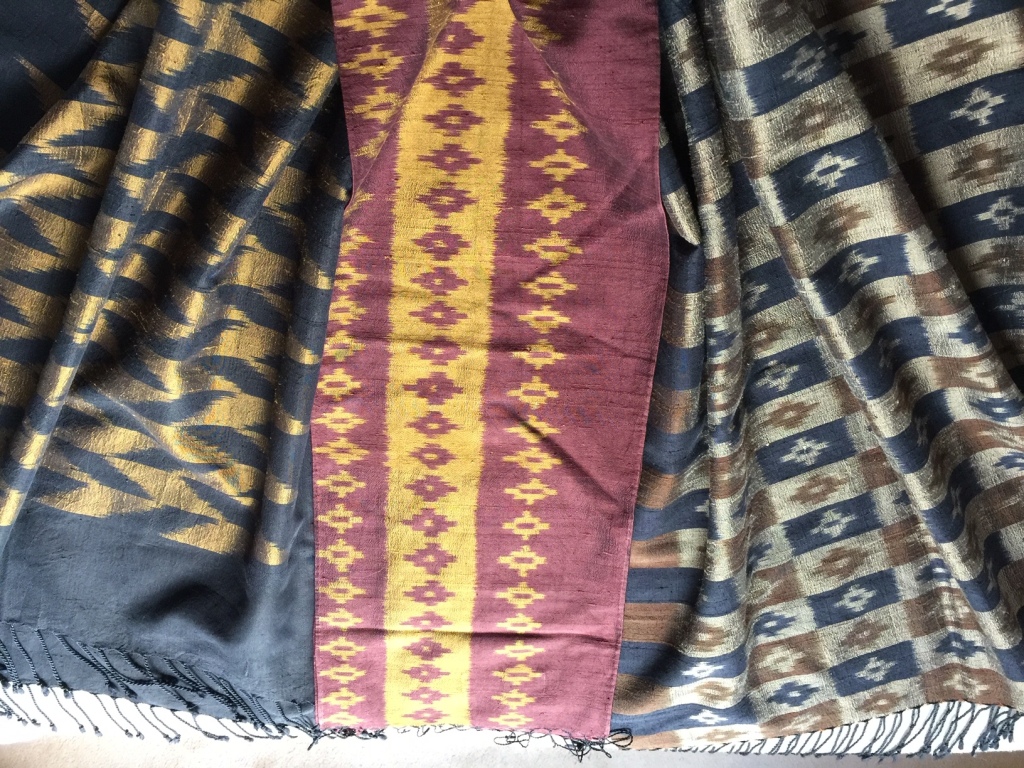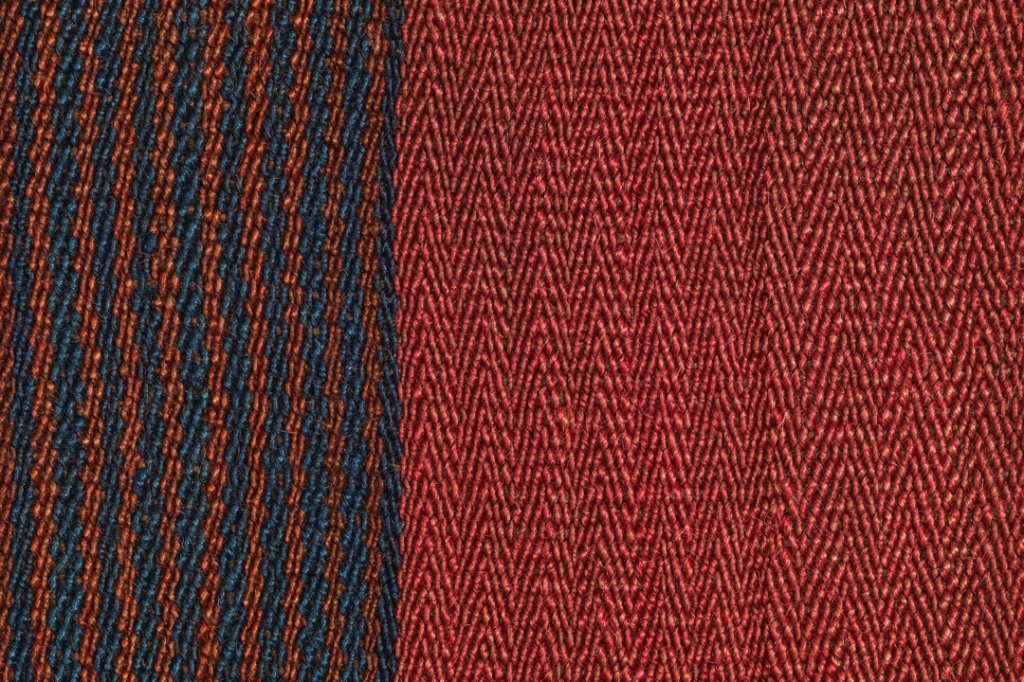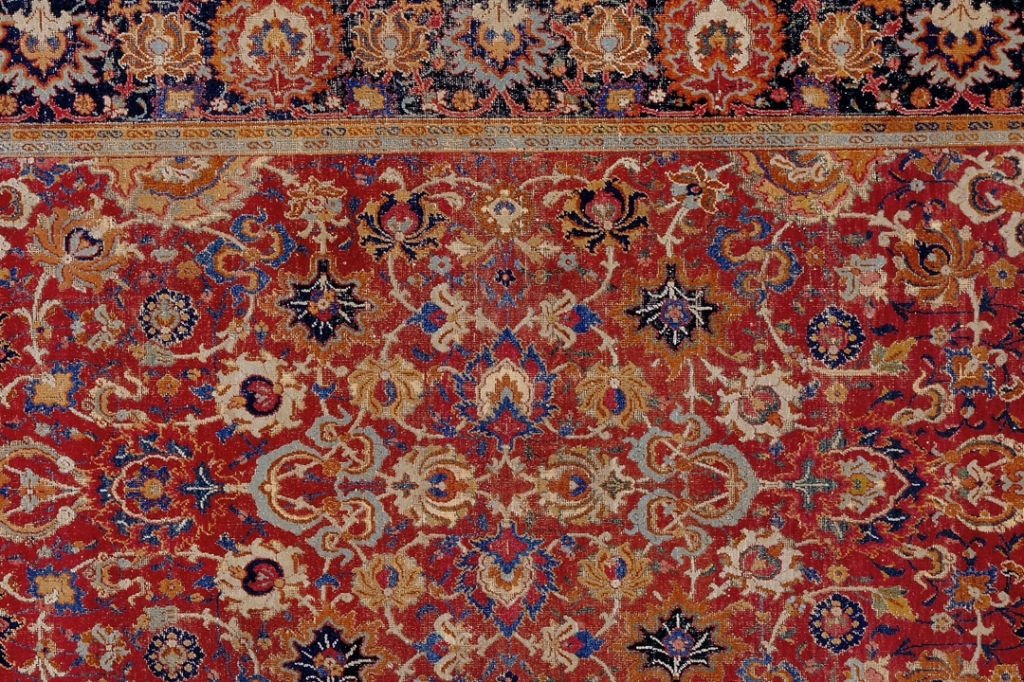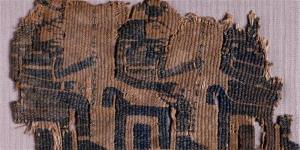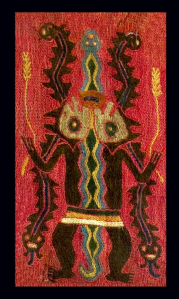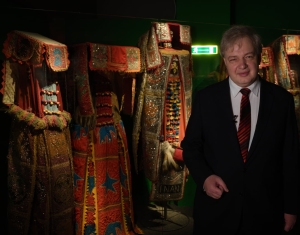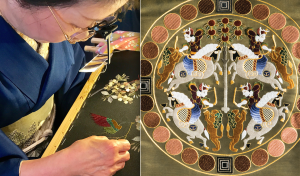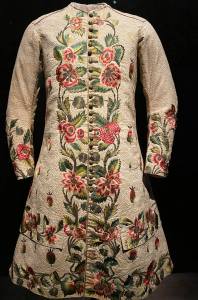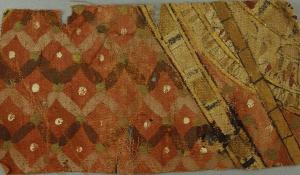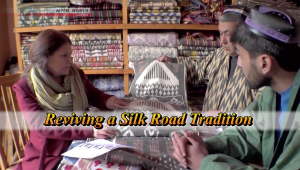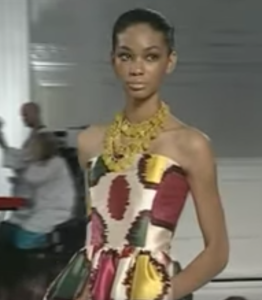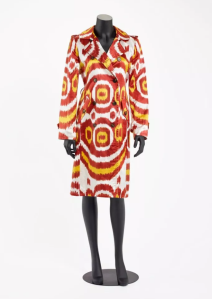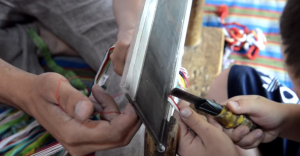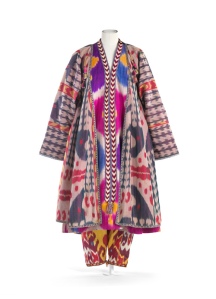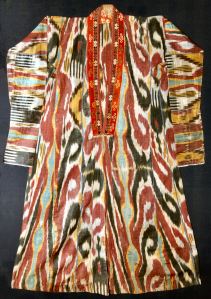
PLEASE NOTE Subscribers who usually read this blog via their email may need to click on the blue title to access it through our WordPress site instead to enable them to watch the videos.
As I explained in my previous blog, there are currently so many exciting textile events on the horizon that I have had to split them across two blogs.

The International Folk Art Market in Santa Fe is back!
“Since 2004, the International Folk Art Market has hosted more than 1000 master folk artists from 100 countries in the world’s largest exhibition and sale of works by master folk artists. Artist earnings have exceeded $34 million and impacted more than one million lives in the communities they represent. The Market offers folk artists a respected spot in the global marketplace to gather together and share their handmade traditions and to create economic, social, and individual empowerment.” IFAM website
There are a few changes, with the event spread over a longer period (7-18 July 2021) and attendees booking 2 hour slots – several of which have already sold out! For full details and registration please click here. That link will also take you to a listing of which artists will be participating each week. The video below shows highlights from the 2019 market just to whet your appetite.
The Association of Dress Historians will host its annual New Research in Dress History Conference online from 7-13 June 2021. This special conference will feature 120 speakers across seven days and according to their website it “will be a weeklong ‘festival’ of dress history”!

There will be several panels each day, with thirty minute slots for each speaker. They run from noon until 20:00 BST. It’s important to note that these proceedings are NOT being recorded so this is your only opportunity to hear these presentations. A huge range of topics will be covered:- Uzbek National Dress, Indigenous Vietnamese Dress, Chinese Influence in Swedish Fashion, Chinese Ceremonial Armour, Japanese Motif Dyeing and many, many more. The full list can be accessed here. One ticket entitles you to attend as many sessions as you like, leaving you free to dip in and out of this event. Click here for more information and registration.

On 8 June 2021 Andean Textile Arts will host a talk entitled Peruvian Doubleweave: Past, Present, and Future. The speaker is Jennifer Moore who in 2013 was invited to teach doubleweave to indigenous Quechua weavers in Peru, where they are once again excelling in this technique that had been discontinued after the Spanish conquest.
“Pre-Columbian Andean weavers were as masterful as any the world has ever known, working on simple backstrap looms but using a wealth of sophisticated techniques. One of these techniques, doubleweave pick-up, was developed in the Andes about 3,000 years ago. While still being done in other parts of the world, doubleweave died out in Peru after the arrival of the Spanish in the fifteenth century.” – Andean Textile Arts website. This talk is at 19:00 EST, which sadly is midnight in the UK. Click here for full details and registration.

The Epic Iran exhibition has now opened at the V&A, London to great acclaim – this article in The Guardian, gives a flavour of it. However perhaps the best introduction comes from this Reuters article which also includes a short video of some of the exhibition highlights introduced by co-curator John Curtis.
Don’t forget that Sarah Piram, Curator of the Iranian collections at the V & A, will give an online talk to the OATG next Thursday, 10 June 2021. She will give an overview of some major works, from early silk fragments showing roundels of animals, to Safavid carpets and contemporary craft tradition. Textiles and carpets will be showcased in different parts of the exhibition, and one of the highlights will be the ‘Sanguszko’ carpet which used to belong to the Duke of Buccleuch and Queensberry – one of the greatest seventeenth century Persian carpets in private hands. This talk will take place at 18:30 BST. OATG members should already have received their invitations, and registration is now also open non-members through this link.

On Saturday 12 June 2021 Sumru Belger-Krody will give an online talk hosted by the Textile Museum Associates of Southern California. The subject of this talk, entitled Earthly Beauty, Heavenly Art: Carpets for Prayer, is prayer carpets.
“Among textiles in Islamic society, prayer carpets hold a special place. They beautify spaces, while conveying metaphorical meanings for Muslim worshippers during their obligatory five-times daily prayer. Additionally, prayer carpets have been communicating the distinct aesthetic choices of the individual cultures who created and used them for centuries, while being recognizable as prayer carpets through their very specific design elements. Sumru Belger Krody, Senior Curator, The Textile Museum Collection at The George Washington University Museum and The Textile Museum, will discuss the prayer carpet’s universality in terms of its use and certain design aesthetics, followed by a brief description on how diverse Islamic cultures make this textile their own. She will show that certain design elements and their meanings or symbolism are universal, and point to a fluid iconography through time, place, religion, tradition, and culture.” – TMA/SC
Admission is free, but you do need to register for this event which begins at 10:00 PDT, which is 18:00 BST.
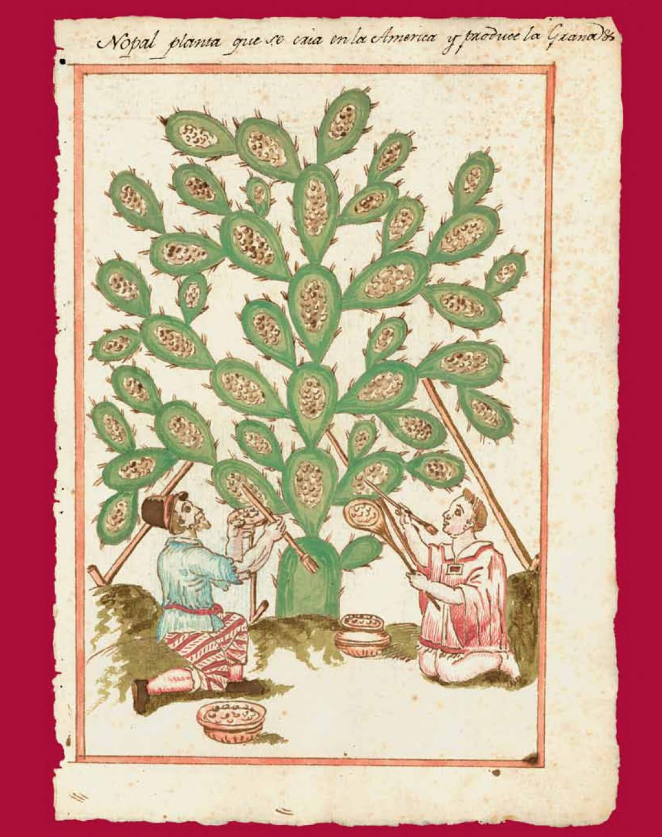
I had intended including the 15 June talk on cochineal by Elena Phipps here, but have now discovered that it has sold out. For those who have missed out, I’m sharing this link to Elena’s work Cochineal Red: The Art History of a Color, a Bulletin of the Metropolitan Museum of Art. In it she “traces the spread of cochineal red from the Americas, where Mexican and Andean weavers had for centuries been using it to create ritual and ceremonial textiles in deep shades of red and pink, to Europe and then to the Middle East and Asia” – Thomas P. Campbell, Museum Director.
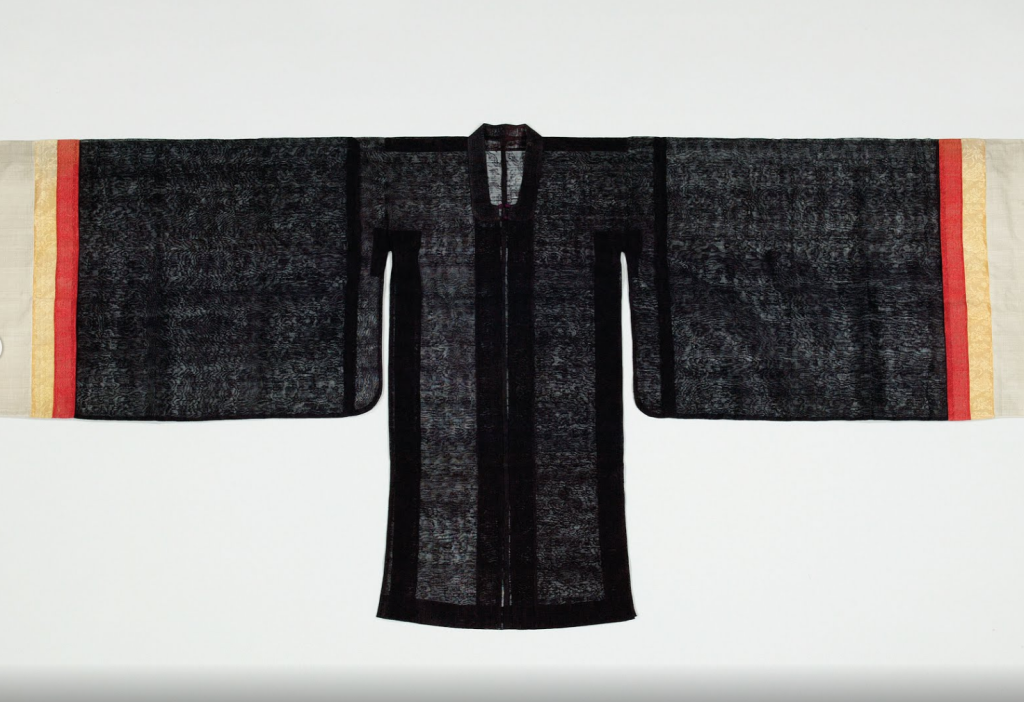
On Friday 18 June 2021 the Saint Louis Art Museum will host an online lecture by Lee Talbot, curator of The George Washington University Museum and The Textile Museum. His subject will be Textiles and Women’s Culture in Joseon Dynasty Korea. “For millennia Korean women have invested a tremendous amount of time in textile production, from cultivating and spinning fibers to dyeing, weaving, and sewing. This lecture will present a dazzling selection of garments, accessories, and furnishings from Korean and American museum collections to explore the role of textiles in upper-status women’s lives during the Joseon dynasty. Examined in light of Joseon literature and other visual arts, these fabrics reveal that when women’s personal freedoms were greatly curtailed, textiles could provide a creative, expressive outlet for women’s feelings as well as a valued source of income and store of wealth.” – Museum website.
Unfortunately this event really only works for our non-UK members as it takes place at 19:00 CDT, which is 1am BST. Here is the link to register. For those who can’t attend, this very well-illustrated online exhibition on Women’s Fashion in the Joseon Dynasty should give some insights.

Don’t forget that Chintz: Cotton in Bloom is still on at the Fashion and Textile Museum, London. This exhibition, which was organised by the Fries Museum, Leeuwarden, The Netherlands, showcases 150 examples of chintz from around the world. These range from mittens to wall hangings and from sun hats to mourning dresses. If you missed the curator talk which took place on 9 April 2021 you may be interested to know that it can now be accessed for a small fee here.
“On the panel were Gieneke Arnolli, former curator of Fashion and textiles, Fries Museum Leeuwarden, the Netherlands. As curator of Chintz: Cotton in Bloom Gieneke discussed the collection and conception of this beautiful exhibition and shared some of the history surrounding chintz. Also joining the panel was internationally respected textile expert and author Mary Schoeser, curator of the display Victorian Chintz and its Legacy. Mary offered her illuminating perspective on English Chintz, its development and place in textile history today. ” – FIT

Dallas Museum of Art currently has an interesting exhibition entitled Moth to Cloth: Silk in Africa. “Throughout the world, silk is used to make cloth and associated with wealth and status, but this rare, natural fiber is also indigenous to sub-Saharan Africa. Silk was traded between African peoples across the continent and was also imported from Europe, India, China, and the Middle East. This installation of cloths drawn from the DMA permanent collection explores the production of silk and silk textiles in Ghana, Nigeria, and Madagascar.” – museum website
This interview with Dr Roslyn A. Walker, curator of this exhibition, was fascinating and I learned a lot about the various types of silk moths as well as how although “imported silk thread has been replaced by rayon or cotton for over fifty years now, genuine silk remains the material of choice for making prestigious garments that symbolize elevated social/political status, success, and wealth.”
Last year I shared this presentation on the silks of Madagascar, but think it useful to share it again here.fascinating. It is by OATG member Dr Sarah Fee of the Royal Ontario Museum. The quality of the images really enhances the excellent text. The ROM hold 54 Madagascan textiles in their collection, some of which date to the nineteenth century. It was interesting to read of a connection with Omani traders and Indian trade cloths, almost reminiscent of the Silk Road connections.
I’ve had lots of positive feedback for these blogs, but can only include events that I am aware of. If you do hear of anything relevant please do contact me. I would also like to strongly recommend two other sources of textile events, both compiled by friends of mine. The first of these is the monthly list produced by Cheri Hunter of the Textile Museum Associates of Southern California. To receive this please send an email. The second is compiled by Marilyn Murphy of ClothRoads, and again is produced monthly. Click here to subscribe.









